A new study affirms Europe’s worst one-year droughts of the 21st century (2003, 2015, and 2018) have been far less severe than the 50+ consecutive years of “megadroughts” linked to the solar-minima-induced coldest decades of the 15th to 19th centuries.
There is a clear link between cooler temperatures and aridity documented in the scientific literature (Baek et al., 2019). Decades and centuries with warmer sea surface temperatures (SSTs) are associated with less drought. The cooler SSTs occurring during the 1400s to 1800s (Little Ice Age) are linked to more aridity, crop failures, and multi-decade megadroughts.
Scientists (Ionita et al., 2021) have determined the two worse European megadroughts of the last 6 centuries occurred during periods with low solar activity and much colder temperatures: the Spörer Minimum (~AD 1400-1480) and Dalton Minimum (~AD 1770-1840).
In contrast, the recent one-year European “mini” droughts have been relatively mild, or “within the range of natural variability and they are not unprecedented over the last millennium.”
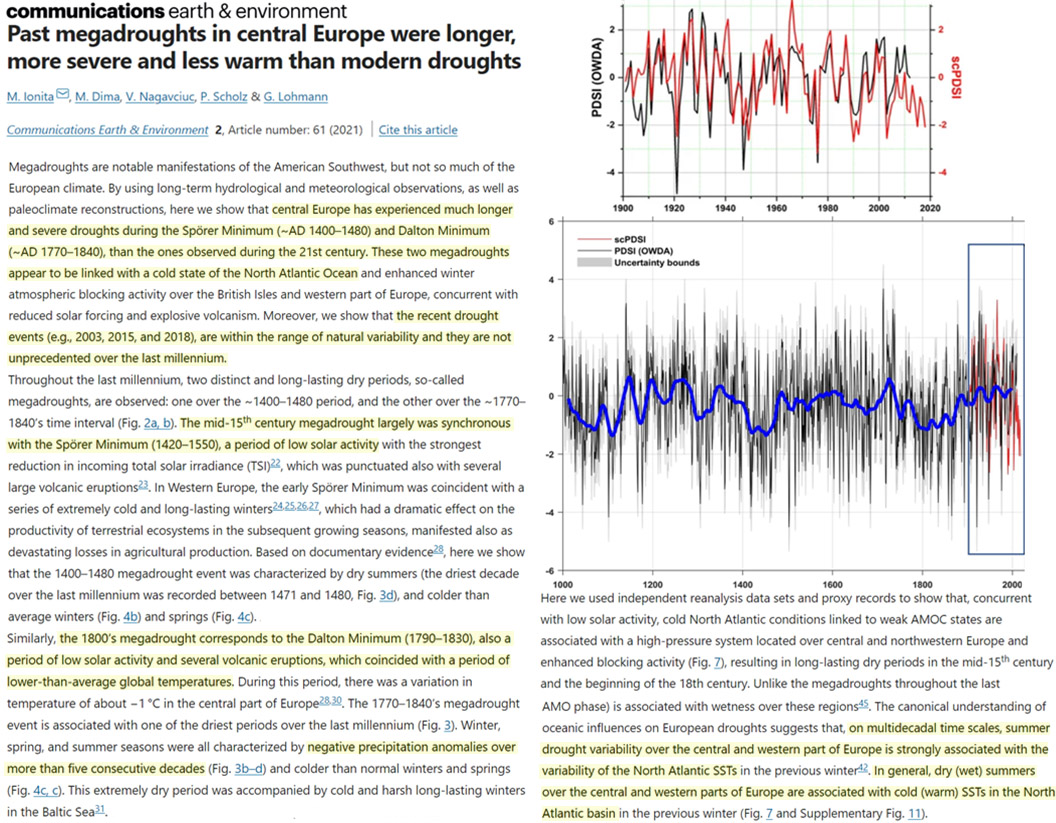
Image Source: Ionita et al., 2021
Northern Hemisphere-wide megadroughts more severe, extensive, prolonged before the 20th century
Periods with lower temperatures were not only associated with more megadroughts in Europe, but across North America, Asia, and the entirety of the Northern Hemisphere (Cook et al., 2015).
“[D]roughts were more severe, extensive, and prolonged over Northern Hemisphere land areas before the 20th century.”
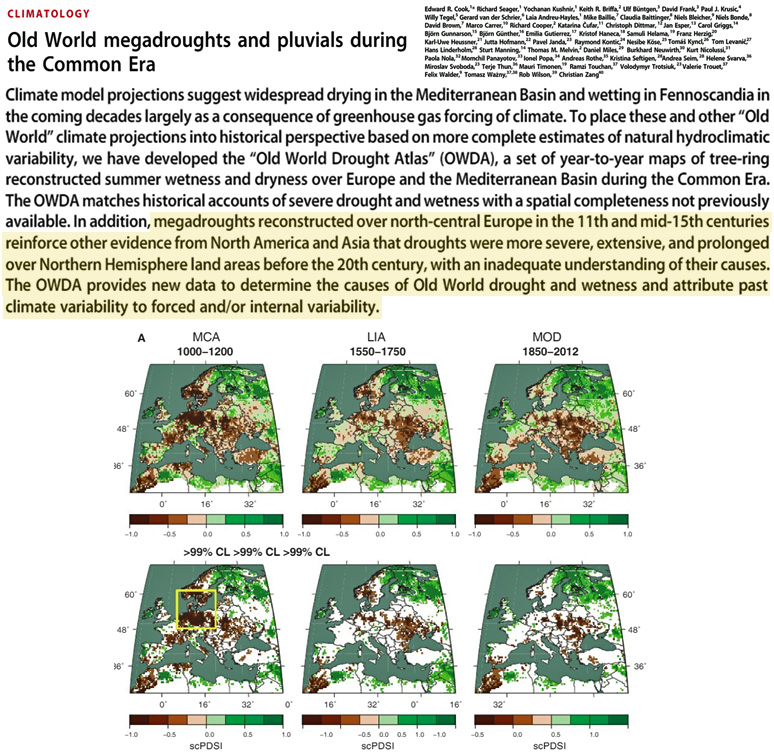
Image Source: Cook et al., 2015
Droughts mechanistically driven by colder – not warmer – temperatures
There is a “robust association” between continental US (CONUS) drought events and “cold tropical Pacific conditions, but not with warm Atlantic conditions” (Baek et al., 2019), and thus the “principal driver” of pan-CONUS droughts on annual timescales are cold SSTs.
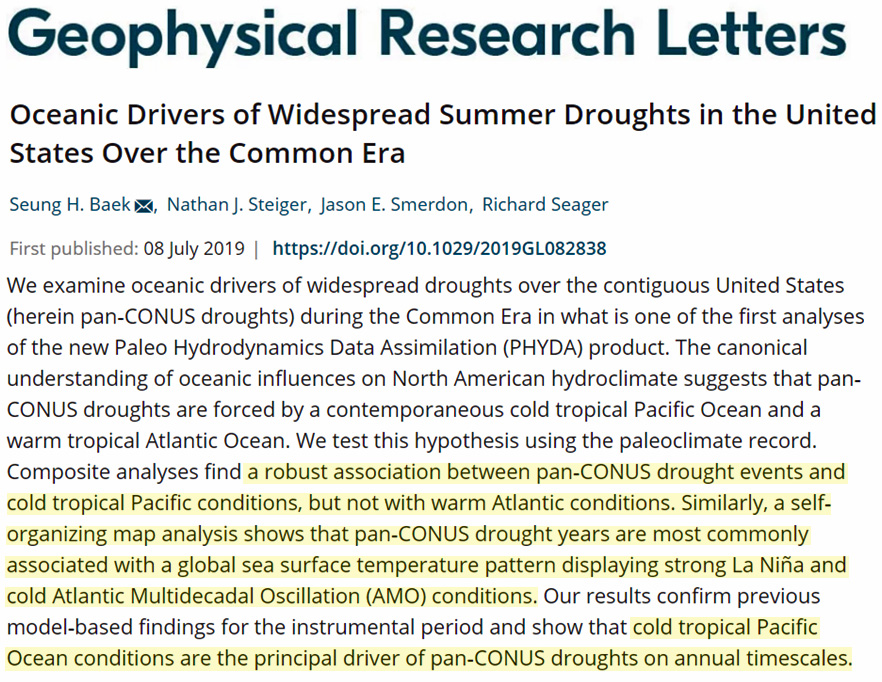
Image Source: Baek et al., 2019
Drought severity along the western coast of the United States is “predominantly [84%] driven by internal atmospheric variability” and cooling sea surface temperatures [16%] (Baek et al., 2021).
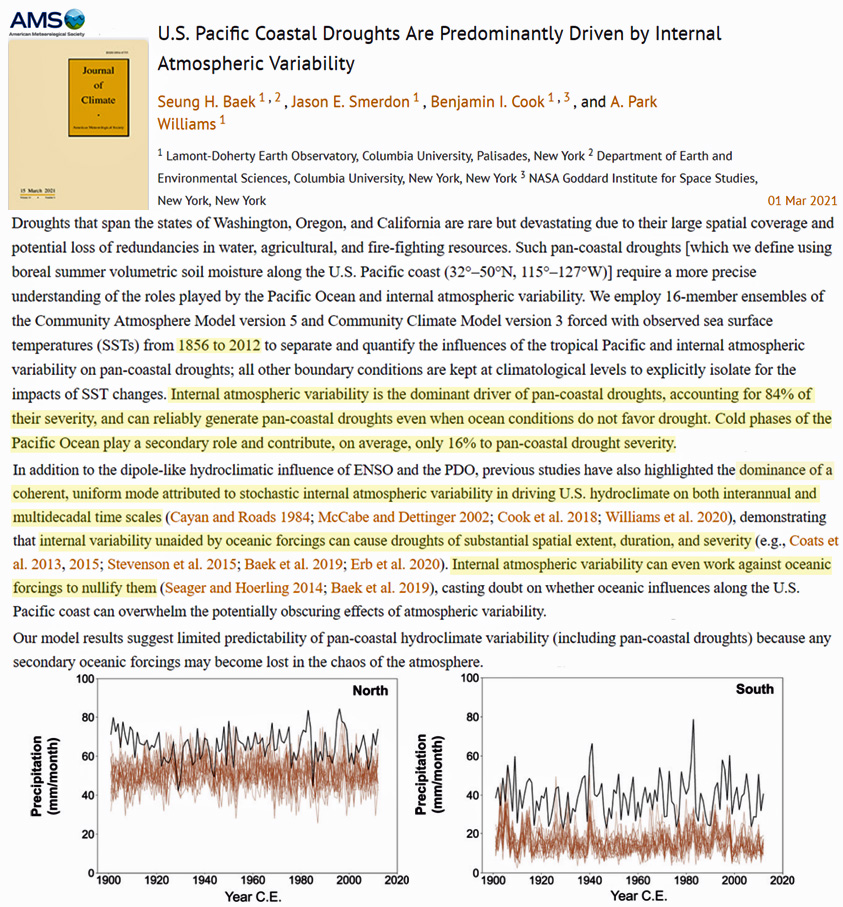
Image Source: Baek et al., 2021
The Sahara Desert, an extreme case example of the cold SST-drought link
Until a few thousand years ago, when mammoths and wild horses ate exposed grass year-round along the coasts of the Arctic Ocean, the Sahara was grass- and lake-covered, teeming with fish and megafauna and even ancient civilizations. These much-warmer periods were obviously more hospitable to plants, animals, and humans.
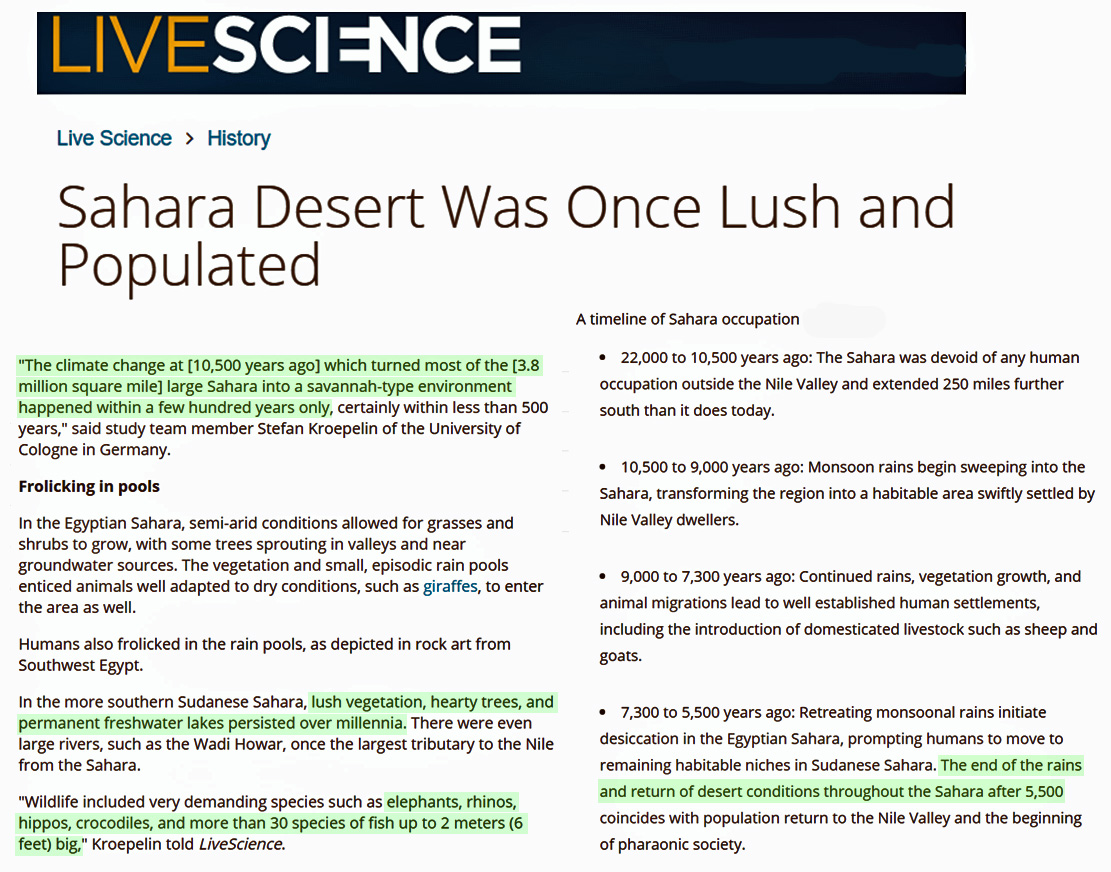
Image Source: LiveScience
In addition to being several degrees warmer, the Earth’s climate was also much more humid and rainforest-like during the Early Holocene, or up until about 5,000 years ago. Rainforests have far more biodiversity than cooler climates do, of course. This is likely why this period is referred to as the “Humidity Optimum” by geologists (Ramos-Roman et al., 2018).
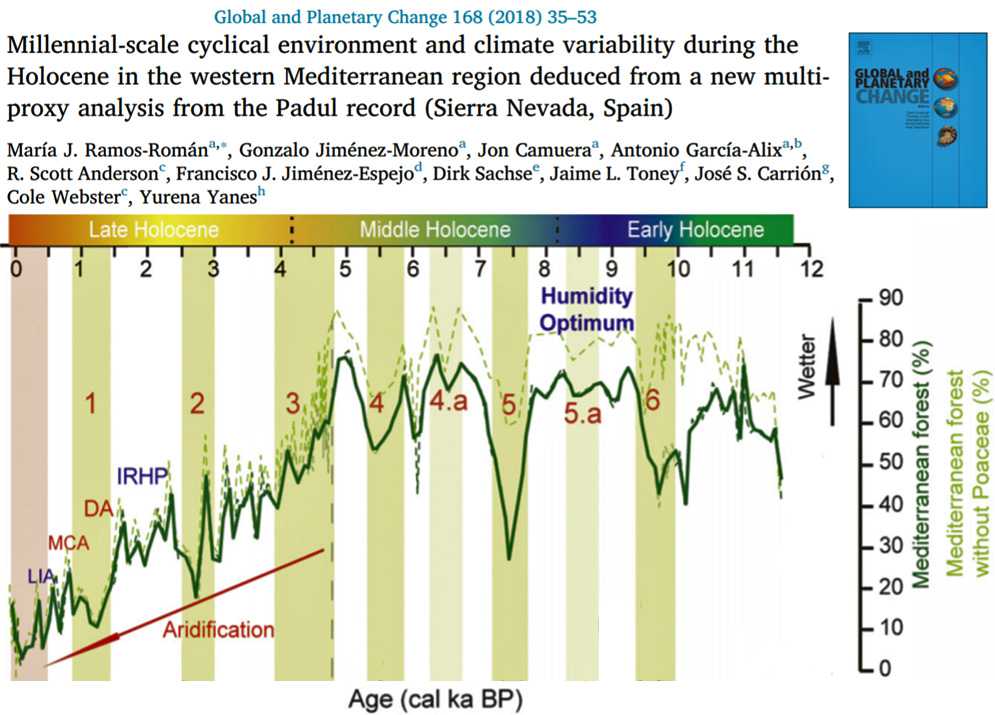
Image Source: Ramos-Roman et al., 2018
Earlier this year we highlighted a study that says no browning trend could be detected on Earth’s land surfaces in recent decades. Only a robust greening trend has been observed via satellite since 1981. Elevated CO2 and warmer SSTs are largely responsible for this world-wide greening (Zhu et al., 2016).
Because desertification is “climate-controlled” (Kuper and Kröpelin, 2006), however, it is concerning that a drop in temperature can transform grass- and lake-covered regions into Sahara-like deserts within a span of just “a few centuries.”
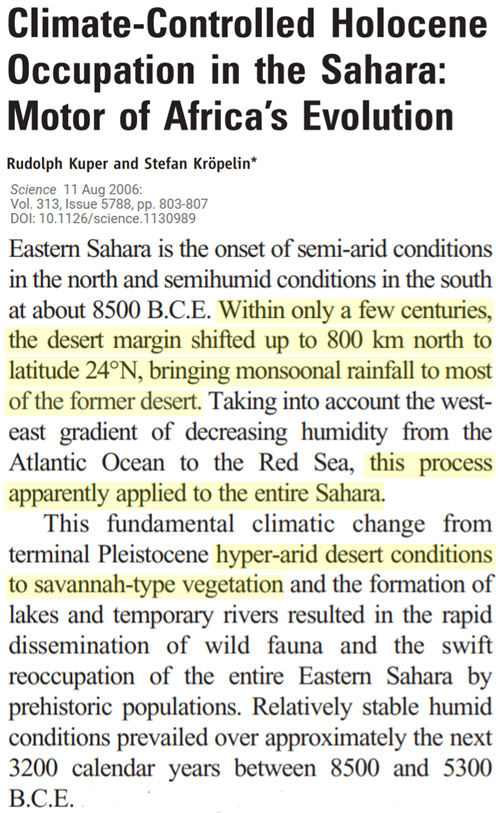





1) The 2003 and 2018 heatwaves were discretely solar driven.
2)Conus drought is worse during a *warm* AMO phase.
3) The AMO is normally warmer during centennial solar minima.
https://media.springernature.com/m685/springer-static/image/art%3A10.1038%2Fs41598-017-13246-x/MediaObjects/41598_2017_13246_Fig2_HTML.jpg
The correlation between warm-and-wet and between cold-and-dry has been discussed many times previously in these pages. The correlation, IMHO, is not the temperature driving the moisture levels, but the other way around – that is, wetter leads to milder, and drier leads to colder. Basically, you can’t “manufacture” cold air unless it is first made dry.